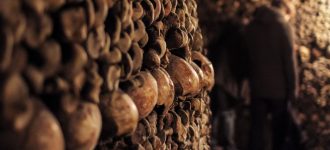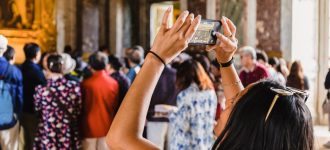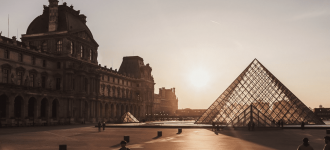Towering over the skyline of Paris, it stands as the preeminent symbol of France, embodying in its monumental iron latticework the optimism of the Industrial Revolution and the hopes of Western Civilization. Although two World Wars in the 20th century considerably dimmed this optimism, the Tower still stands after a turbulent 128 years since its construction, and there is barely a person in the world who would not recognize it. Today, it serves not only as an icon but also as one of the most popular Paris attractions, drawing millions from around the globe who come to marvel at its grandeur, uncover its fascinating Eiffel Tower history, and collect their own Eiffel Tower facts.
Chances are if you’re reading this you know of the Eiffel Tower, but how much do you really know about it? If you’re searching for the most interesting Eiffel Tower facts or planning your visit, you’re in the right place. In honor of our Paris walking tours, we have put together a short history of the Tower that includes all the little nuggets of info that you don’t know, have never learned, and may have never even suspected.
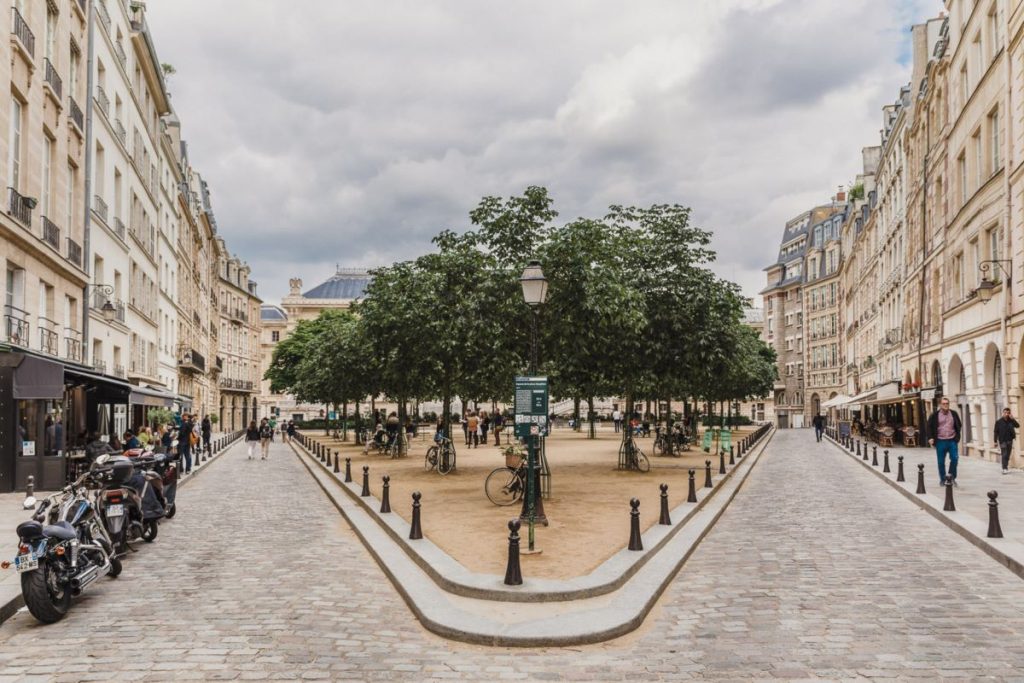
1. It was built partly to massage France’s (badly wounded) national pride
The 19th century proved turbulent for France. The country started on a high note by taking control of much of Europe in the Napoleonic wars. However, internal strife and wider geopolitics chipped away at the empire until, in 1870, the French suffered defeat by the Germans in the Franco-Prussian war, the Second Empire fell, and France’s territorial holdings shrank to a shadow of their former size. In Paris, which London had recently surpassed as the world’s most populous city, confidence hit all-time lows and the men running the Third Republic desperately sought something to boost national morale.
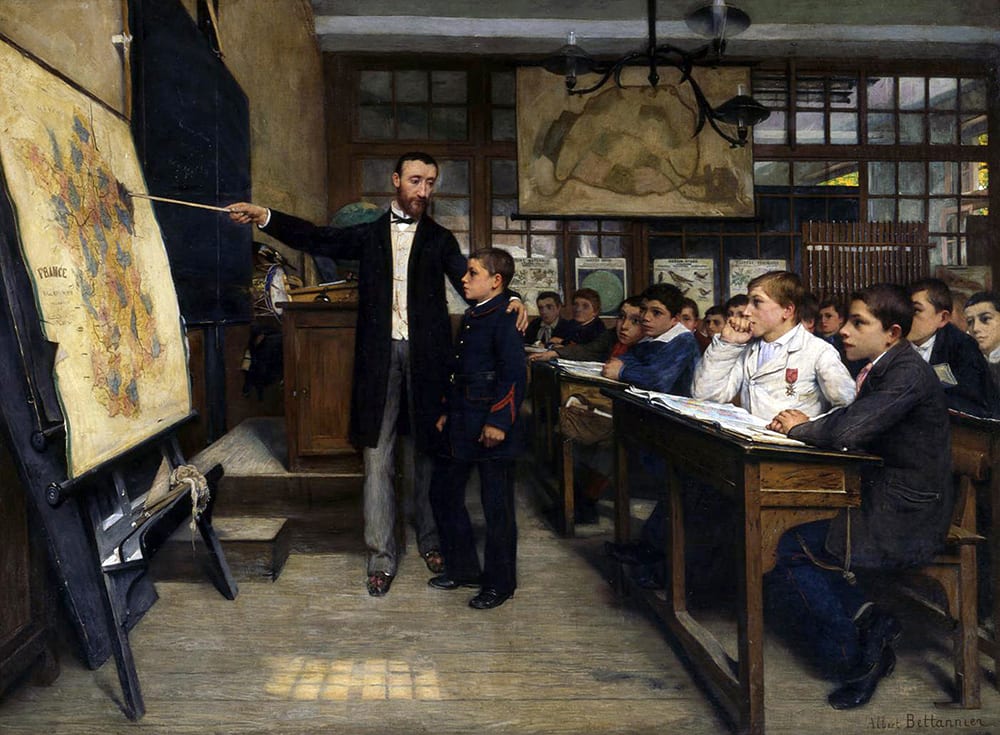
La Tache Noir by Albert Bettannier depicts a schoolteacher showing his pupils Alsace-Lorraine on a map. The map marks it in black because Germany had recently taken it from France, causing a crushing blow to national morale.
They found this boost in the 1889 World Fair, which acted as a coming out party for the “new and improved” Paris. The city wanted to showcase its technological advances and design prowess while also evoking old-fashioned Napoleonic greatness. The Eiffel Tower, conceived as a sort of tiara for the exhibition grounds, emerged as the perfect symbol. Gustave Eiffel stated, “the only country with a 300-meter flagpole.” As a result, the Tower would soon become the most visited of all Paris attractions, its image synonymous with the city and France itself.
2. Initially, it was a 300-meter failure
Almost as soon as construction began on the tower, an influential cabal of Parisian artists and architects expressed outrage. They circulated a famous petition, “Artists Against the Eiffel Tower,” which read:
“We, writers, painters, sculptors, architects and passionate devotees of the hitherto untouched beauty of Paris, protest with all our strength, with all our indignation in the name of slighted French taste, against the erection … of this useless and monstrous Eiffel Tower … To bring our arguments home, imagine for a moment a giddy, ridiculous tower dominating Paris like a gigantic black smokestack, crushing under its barbaric bulk Notre Dame, the Tour Saint-Jacques, the Louvre, the Dome of les Invalides, the Arc de Triomphe, all of our humiliated monuments will disappear in this ghastly dream. And for twenty years … we shall see stretching like a blot of ink the hateful shadow of the hateful column of bolted sheet metal.”
If the literati felt kind, they called it the “Metal Asparagus.” If not, they labeled it a “solitary riddled suppositoire.” The most repeated, and probably most apocryphal, story of tower hate claims that writer Guy de Maupassant frequently ate lunch in it because it was the only place in Paris where he couldn’t see the tower. Ironically, the Eiffel Tower now stands proudly among these iconic Paris attractions, drawing millions of visitors each year.
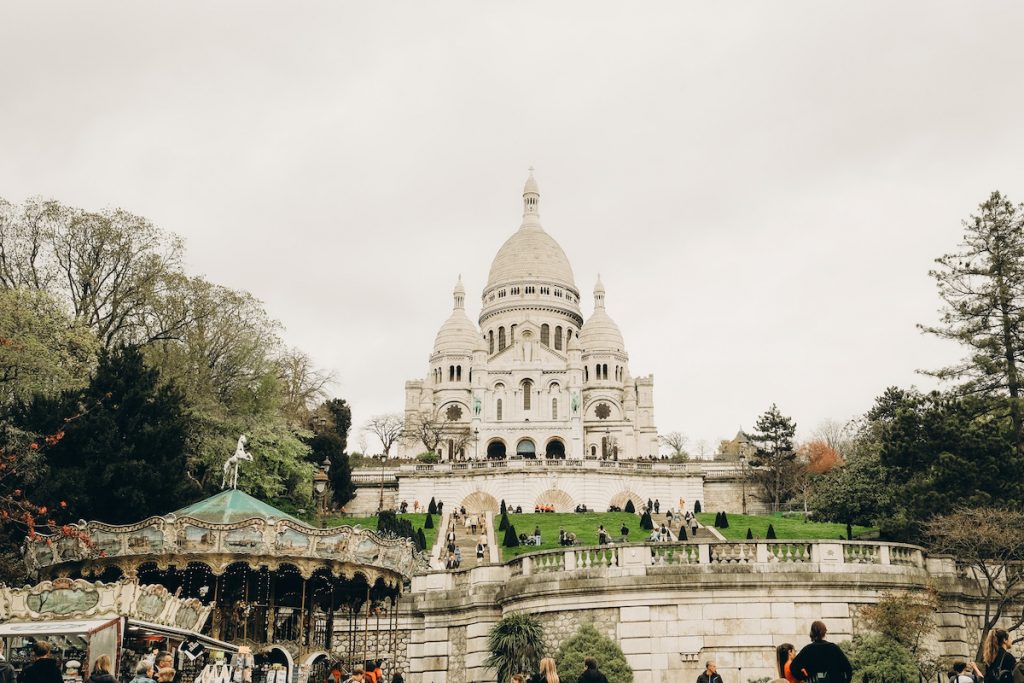
3. Gustave Eiffel also had a hand in another monument you might have heard of
Eiffel did not actually design the tower that bears his name; his associates, Émile Nouguier and Maurice Koechlin, came up with the design under Eiffel’s direction at the Compagnie des Établissements Eiffel. Furthermore, they had already worked on another world-changing monument: the Statue of Liberty. In 1879, when the internal designer for the Statue of Liberty, Eugene Viollet-le-Duc, died suddenly, Eiffel and Koechlin took over. They rejected Viollet-le-Duc’s idea to make the bronze exterior bear all her weight and instead installed an iron skeleton inside for support.
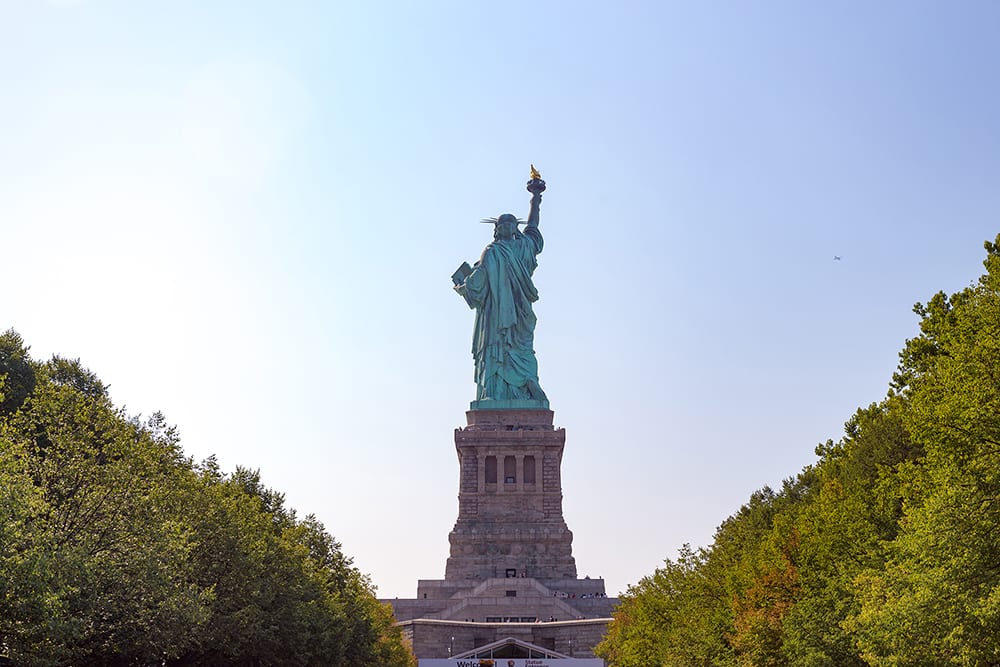
If not for the skeleton that Gustave Eiffel and his company designed, the Statue of Liberty might not look as good as she does today. These intertwined stories count among the most surprising Eiffel Tower facts, connecting Paris’s iron tower with New York’s copper lady.
4. Despite what some of Paris’ cultural elite said, almost everyone else loved it
The year it was constructed, the tower welcomed 2 million visitors. These days, it draws about 6.9 million per year, bringing the grand total to around 250 million since 1889. In its first year, visitors included eight African kings, the Prince of Wales, Thomas Edison, and Buffalo Bill, to name just a few. Today, as one of the leading Paris attractions, it continues to set records for annual visitors. If you want to gather Eiffel Tower facts or experience unforgettable views, you simply cannot miss a visit.
Notable highlights from the Tower’s early popularity include:
- Welcoming dignitaries and celebrities from around the world in its first year
- Drawing millions of tourists annually, making it one of the most visited monuments worldwide
- Quickly becoming a global symbol for both Paris and France
5. The tower has no real use or meaning, and over time, that has become its point
Roland Barthes wrote, “The Tower attracts meaning the way a lightning rod attracts thunderbolts, for all lovers of signification it plays a glamorous part, that of a pure signifier, i.e., of a form in which men unceasingly put meaning.” To be fair, the tower has served one utilitarian purpose since the beginning of the 20th century: transmitting radio and later television signals. Nevertheless, people have tried to add meaning to it in various, and often outlandish, ways. First and foremost, they go to the top—originally by walking the 1,710 steps to the pinnacle, now by elevator. However, many have gone far beyond climbing.
Some of the most unusual feats and facts associated with the Tower include:
- Runners racing to the top
- Cyclists riding from the pinnacle to the bottom
- Climbers scaling its structure
- Parachutists jumping from its heights
- Two separate attempts to fly planes between its legs (only one succeeded)
- Unfortunately, some 380 people have committed suicide from the tower
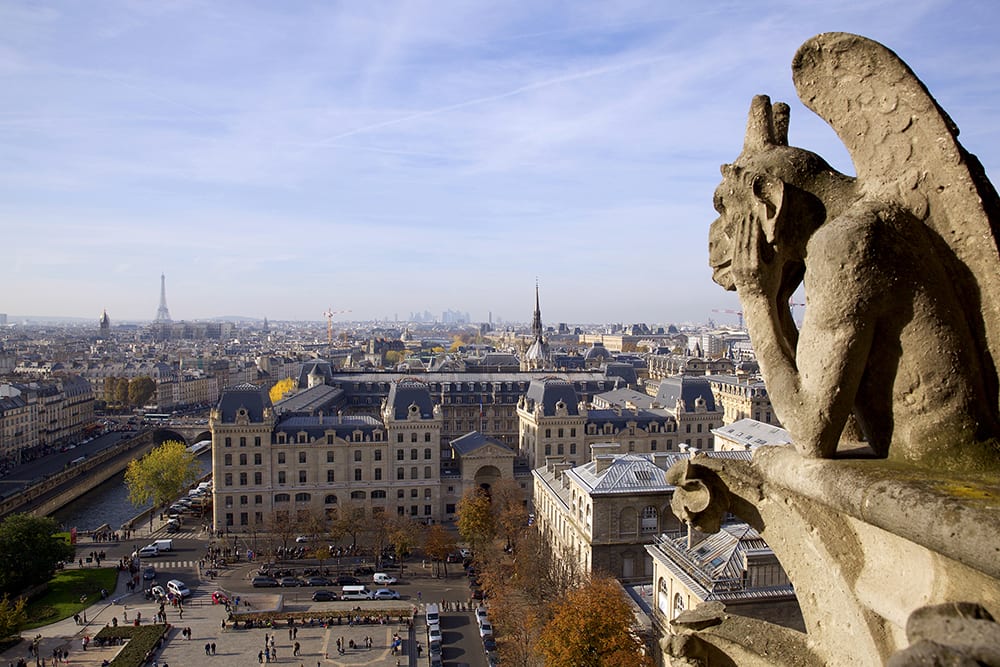
“There is virtually no Parisian glance it fails to touch at some time of day,” Roland Barthes observed. The tower appears here, being pondered by a gargoyle atop Notre Dame.
6. It was the tallest building in the world for 42 years
The Eiffel Tower (1,063 ft high) stood above any other building in the world for nearly a half-century after its construction. Eventually, the Empire State Building in New York surpassed it. Although the 2.5 million rivets that hold the Tower together often impress visitors, the fact that every 7 years, the tower requires repainting with 60 tons of paint demonstrates its meticulous maintenance. Of all the Eiffel Tower facts, its sheer size and ongoing care truly inspire awe.
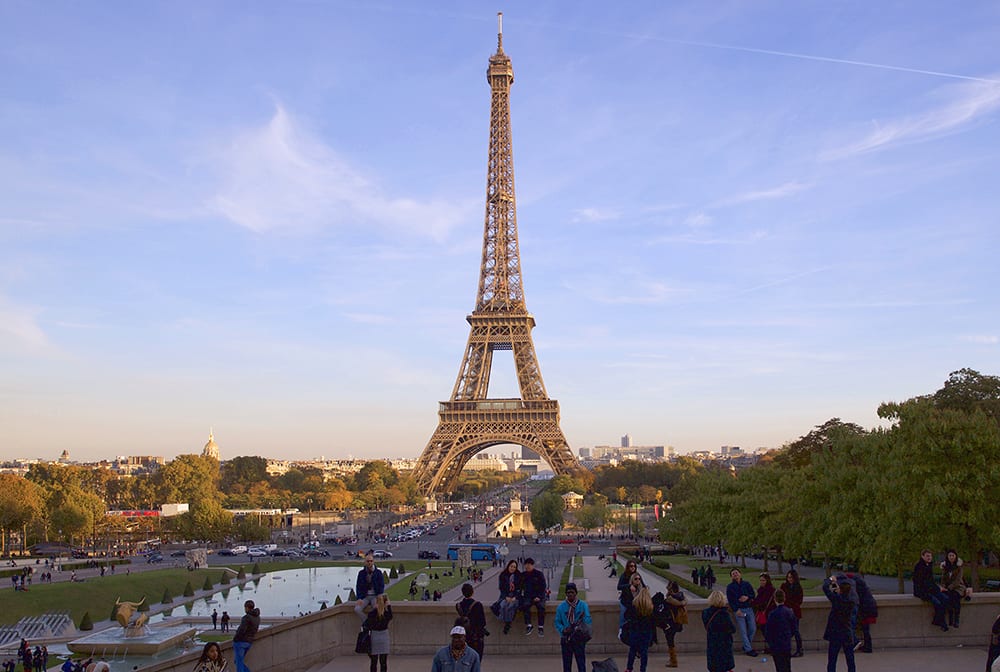
It may no longer be the world’s tallest building, but the Eiffel Tower remains anything but small.
7. How to visit the Eiffel Tower
The Tower stands at the crossroads of the Quai Branly and the Champ de Mars. Visitors can reach it by buses (no. 42, 69, 72, 82, 87 to Champs de Mars), express trains known as the RER (C line), and the Paris Metro (stop name: Bir Hakeim). When planning your trip, consider the best time to visit the Eiffel Tower. Its opening hours are longer than those of many other monuments but do change slightly throughout the year. From September through mid-June, the Tower opens from 9:30am – 11:45pm. From mid-June through early September, it opens from 9:00am – midnight, with extended hours during Easter weekend. The last elevator to the top always leaves 45 minutes before closing, and if the weather turns bad, the top might close.

You can visit the Eiffel Tower in three ways. First, walk around its base for free. Second, walk to the top—Eiffel Tower tickets to the stairs cost €11.30, but you will burn many calories. We don’t recommend this route for the old, infirm, or young children, but it is cheaper and comes with a serious sense of accomplishment.
There are actually two separate types of elevators on the Eiffel Tower. One goes to the second floor and costs €18.10, while the other goes to the very top and costs €28.30. All three types of Eiffel Tower tickets are available at the same booths, meaning that, during the high season, the ticket lines can last for hours. If you buy elevator tickets, you will also have to wait in line to board them. (Fortunately, these lines are relatively short.) To avoid the long ticket lines, buy your tickets in advance or go with a guided tour that will pre-reserve your tickets. For those who want to maximize their time at one of the world’s foremost Paris attractions, advance planning proves essential.
Frequently Asked Questions About the Eiffel Tower
What are some interesting Eiffel Tower facts?
Among the most fascinating Eiffel Tower facts: it was built for the 1889 World Fair, was the tallest man-made structure in the world for 42 years, and is repainted every 7 years with around 60 tons of paint. Over 250 million people have visited since its opening, cementing its place among the top Paris attractions.
How can I buy Eiffel Tower tickets and what do they cost?
Eiffel Tower tickets are available at the onsite booths or online in advance. Tickets to the stairs are €11.30, to the second floor via elevator €18.10, and to the top €28.30. Purchasing tickets in advance is the best way to avoid long lines, especially during peak season.
What is the best time to visit the Eiffel Tower?
The best time to visit the Eiffel Tower is early in the morning or later in the evening to avoid crowds. Spring and fall offer milder weather and shorter lines. Opening hours vary: 9:30am – 11:45pm from September through mid-June, and 9:00am – midnight from mid-June to early September, with extended hours on special holidays.
Ready to experience the magic and uncover more fascinating facts about the Eiffel Tower? Book your Paris city tour today!

